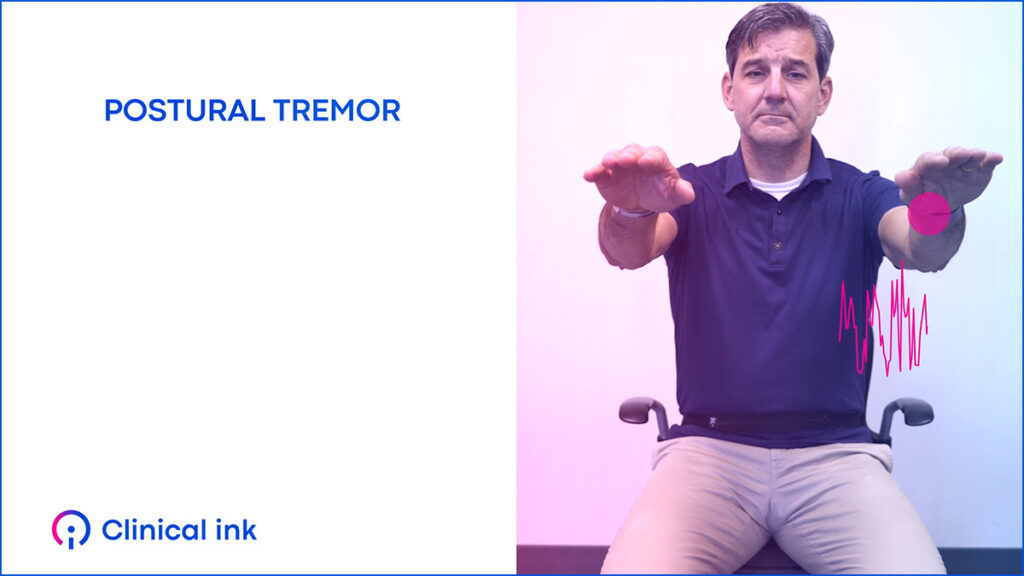Measure Arm Stability and Motor Performance
The Clinical ink Mobile Postural Tremor Assessment measures arm stability and motor performance by measuring moment-to-moment changes in upper limb position and velocity.
Data is captured by mobile phone and smartwatch. During a baseline rest phase, participants rest their hands in their lap. During an active posture phase, participants hold their arms out, palms facing down.
Through signal processing of different frequencies, we can measure changes in upper limb position and velocity from diseases affecting motor control as well as treatment related changes.
Why Measure Postural Tremor?
Voluntarily attempting to maintain a position against gravity is sensitive to changes in motor performance. Diseases affecting brain regions involved in the ability to maintain steady posture and arm position can negatively affect Postural Tremor performance. For example, altered performance has been demonstrated in Parkinson’s disease, multiple sclerosis, and stroke.1-3 Using Postural Tremor measurements, disease- and treatment-related changes in motor performance can be estimated.
The Role of Clinical ink’s Technology
Learn more about how Clinical Ink’s sensors and wearables technology power the Mobile Postural Tremor Assessment and its data collection, as well as other mobility, cognitive, and speech assessments, or download the Clinical ink Big Brain Book, a digital assessments and endpoints catalog.
Sources:
1. Lance, JW, Schwab, RS, & Peterson, EA (1963). Action tremor and the cogwheel phenomenon in Parkinson’s disease.Brain, 86, 95-110.
2. Koch, M et al (2007). Tremor in multiple sclerosis. Journal of Neurology, 254, 133-145.
3. Bansil, S (2012). Movement disorders after stroke in adults: A review. Tremor and Other Hyperkinetic Movements, 2,tre-02-42-195-1.
